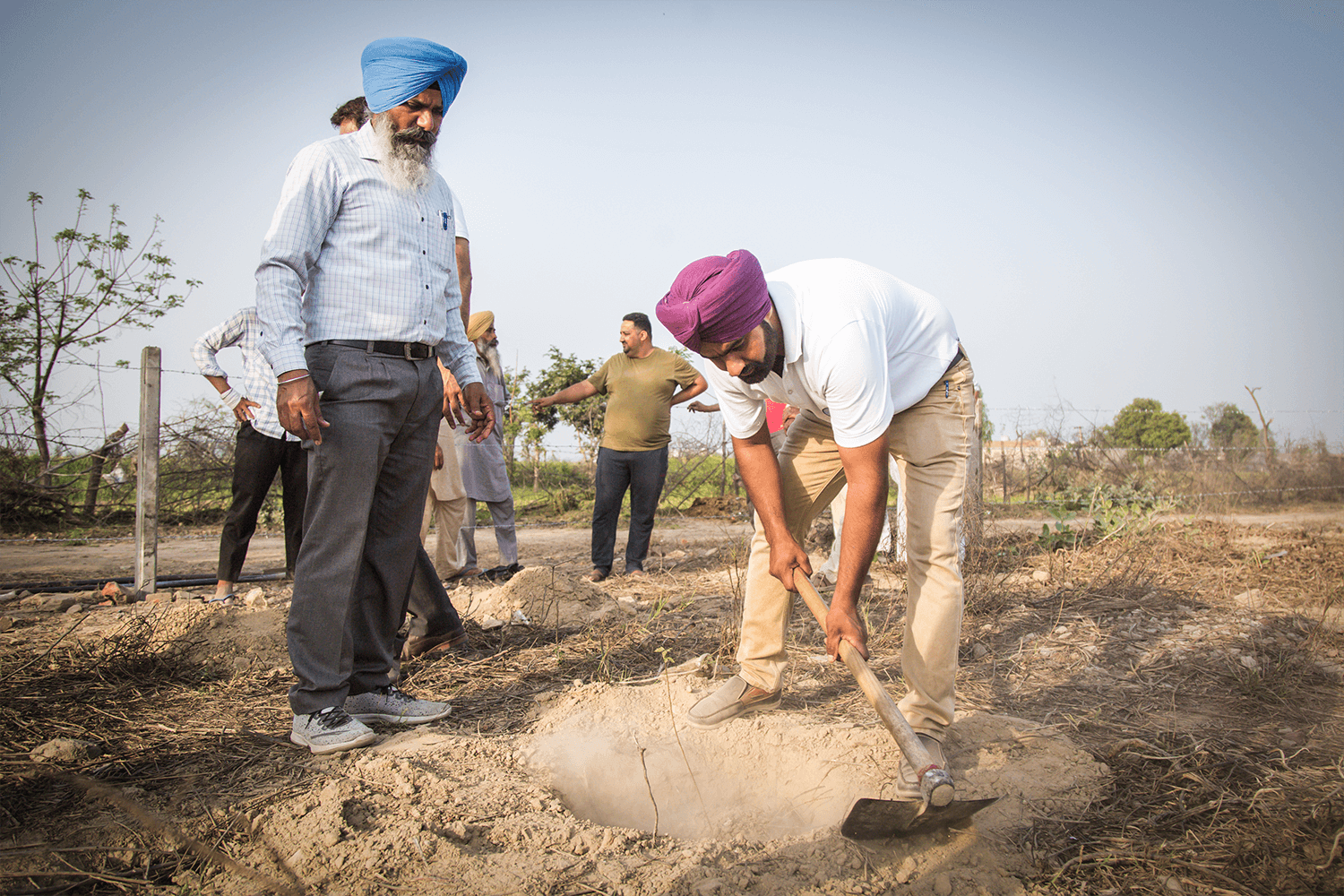INCREASING GREEN COVER IN INDIA

The issue
India is among the 10 most forested countries in the world, with nearly a quarter of the country under green cover. However, India is rapidly losing old and dense forests, and needs to maintain focus of reforestation efforts to ensure its top 10 status. India’s climate commitment adding a carbon sink of 2.5 – 3 million tonnes of CO2 by 2030 through reforestation and restoration efforts. But it is lagging behind on this commitment and needs to do more.

Our approach
Our aim is to support India’s reforestation commitment by engaging communities in our geographical areas and identifying common lands in villages for plantations. We are connecting this effort with the MGNREGA scheme, which enables livelihood opportunities for the communities through labour work and ensuring maintenance and upkeep of the plantation site. Every year, we plan to plant 1.5 lakh native tree saplings in Punjab, and expand to adjoining states.
We introduced this initiative in 2021 and planted
35,000 saplings
of native tree species in common areas of
52 villages in Punjab
Our Impact
We engaged labour through the MGNREGA scheme, thereby creating livelihood opportunities for villagers
Our teams are working with the local communities to ensure maintenance and upkeep of the plantation sites to ensure highest sapling success rate
Our planet is witnessing a gradual but irrefutable change in global climatic patterns. These changes are unquestionably ascribed to human activities resulting in an increase in the Greenhouse Gases (GHGs) emissions.
We see evidence of these changes in the Fifth Assessment Report (AR5) by the IPCC which describes the extent of the rise in terrestrial and oceanic surface temperature, sea-level rise, and decrease in glacial & arctic sea-ice content in great detail.

According to a special report titled Global Warming of 1.5°C released by the IPCC “human activities are estimated to have caused approximately 1.0°C of global warming above pre-industrial levels, with a likely range of 0.8°C to 1.2°C. Global warming is likely to reach 1.5°C between 2030 and 2052 if it continues to increase at the current rate*.
In India, the agriculture sector contributes nearly 18% of gross national GHG emissions mainly through rice cultivation, livestock production, fertilizer use, and burning of crop residues. It is also a major driver of indirect emissions through the conversion of forests and other natural systems to farmland.
Plantation Drive by IPSF
To improve biodiversity in the communities and villages that we work with, the IPSF initiated an ongoing plantation drive in March 2021
along with local community participation.
Our Process
To initiate the plantation drive, patches of land are identified along with the village Panchayat and are jointly developed and maintained.
Our Objective
The drive is to plant local species to increase carbon sequestration and/or reduce GHG emissions by establishing, increasing, or restoring vegetative cover (forest or non-forest) through the planting, sowing or human-assisted natural regeneration of woody vegetation.
Extended Outcomes
The drive also intends to reduce GHG emissions on croplands and grasslands by increasing carbon stocks in soils and woody biomass and/or decreasing CO2, N2O and/or CH4 emissions from soils.
Community Supported
52 villages
&
6 Districts
Trees Planted
34,000 +
CONTACT
- F-0, Ground Floor,The Mira Corporate Suites, Plot No. 1 & 2, Ishwar Nagar, Mathura Road, New Delhi 110065
- info@ipsfoundation.org
NEWSLETTER
We release a quarterly newsletter to share the latest update and happenings from IPSF. SUBSCRIBE BELOW

